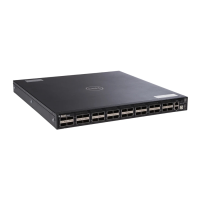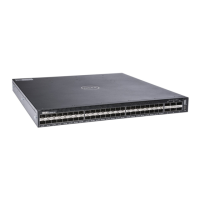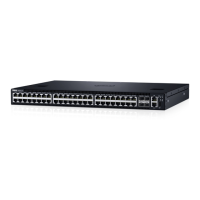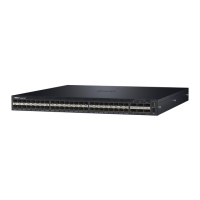• Cyclic redundancy check (CRC): 4 bytes
• Inter-frame gap (IFG): (variable)
You can optionally include overhead fields in rate metering calculations by enabling QoS rate adjustment.
QoS rate adjustment is disabled by default.
• Specify the number of bytes of packet overhead to include in rate limiting, policing, and shaping
calculations.
CONFIGURATION mode
qos-rate-adjust overhead-bytes
For example, to include the Preamble and SFD, type qos-rate-adjust 8. For variable length
overhead fields, know the number of bytes you want to include.
The default is disabled.
Enabling Strict-Priority Queueing
In strict-priority queuing, the system de-queues all packets from the assigned queue before servicing any
other queues. You can assign strict-priority to one unicast queue, using the strict-priority command.
• Policy-based per-queue rate shaping is not supported on the queue configured for strict-priority
queuing. To use queue-based rate-shaping as well as strict-priority queuing at the same time on a
queue, use the Scheduler Strict feature as described in Scheduler Strict .
• The strict-priority supersedes bandwidth-percentage configuration.
• A queue with strict priority can starve other queues in the same port-pipe.
• Assign strict priority to one unicast queue.
CONFIGURATION mode
strict-priority
The range is from 1 to 3.
Queue Classification Requirements for PFC Functionality
Queue classification requirements for PFC functionality are mentioned below:
• On untagged ports, Queue classification must be based on DSCP.
• On tagged ports, Queue classification must be based on Dot1p. Layer 3 classification configurations
should not be present on the port.
• On hybrid ports, Queue classification can be based on either Dot1p (for tagged packets) or DSCP (for
untagged packets) but not both.
Example Case:
PFC does not work for tagged traffic, when DSCP based class map is applied on a hybrid port or on a
tagged port. Assume two switches A and B are connected back to back.
Consider the case where untagged packets arrive on switch A, if you want to generate PFC for priority 2
for DSCP range 0-7, then you have to match the interested traffic. You must use the class map and
724
Quality of Service (QoS)
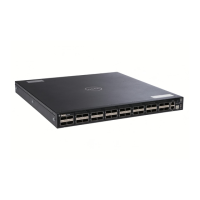
